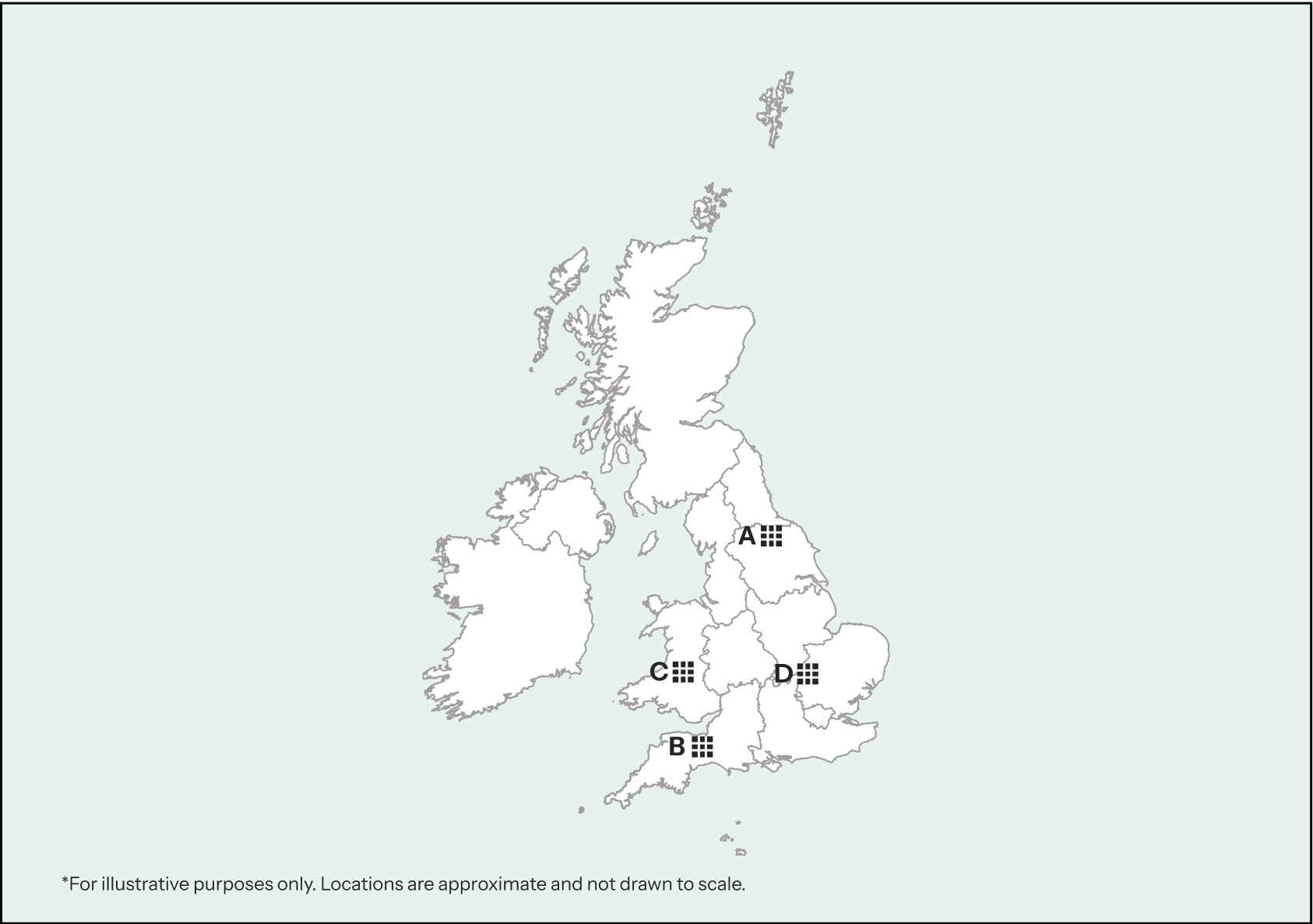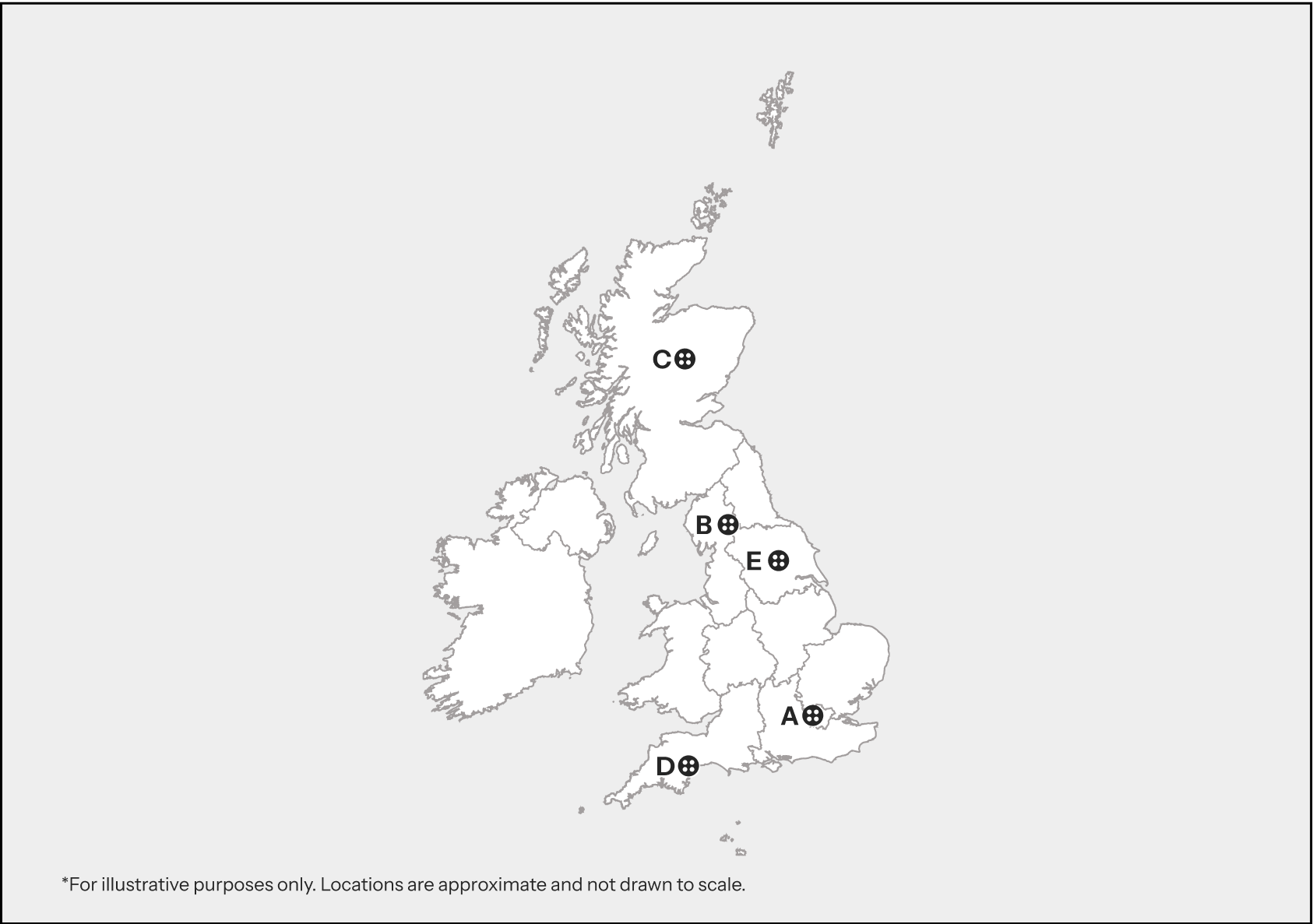Country Overview
No items found.
*All data is in tonnes per annum
TEXTILE WASTE
2,116,000
Post consumer textile waste
1,036,840
Cotton
42.17%
Polyester
10.70%
Poly cotton
12.46%
Acrylic
4.79%
Viscose
4.31%
Wool
1.76%
Polyamide
1.28%
Other blends
19.33%
Other pure materials
0.80%
Unknown
2.40%
pre consumer textile waste
Post Industrial textile waste
Cotton
Polyester
Poly cotton
Acrylic
Viscose
Wool
Polyamide
Other blends
Other pure materials
Unknown
Imported textile waste
Cotton
Polyester
Poly cotton
Acrylic
Viscose
Wool
Polyamide
Other blends
Other pure materials
Unknown
*This data is collectively from UK, Germany, Netherlands, Poland, Spain, & Belgium.
KEY POINTS ON T&a LANDSCAPE
90%
UK Clothing is Imported
UK textile and apparel industry is the third largest globally, following China and the United States. In 2024, the UK's fashion and textile retail market was valued between £53–57B. Notable brands include Burberry, Marks & Spencer, Barbour, and ASOS, which have significantly influenced both domestic and global fashion trends. The top countries importing consumer textiles are China, Bangladesh, Turkey and India.
50%
British Wool Clip goes into Carpeting
The UK does not produce cotton domestically. However, it is a notable wool producer, accounting for 3% of global wool production in 2019. By 2020, the UK textile sector generated £5.8 billion in materials, ranging from luxurious cashmere to worsted wool, tweeds, and tartans, as well as a diverse array of technical and performance textiles.
44.3%
UK Apparel Production comes from the 'Outerwear’
The industry is centred on niche, small-scale manufacturing, with strengths in printing, knitwear, and processing activities like dyeing, finishing, and fabric knitting. The UK also benefits from strong tailoring fabric mills, though much output is exported for garment construction. CMT remains limited. The number of UK T&A manufacturers have been steadily increasing, supported by strong growth in the technical textiles sector
34 kT
Post Consumer Textile Waste was Recycled Locally (2022)
Only a fraction of the waste generated in UK is recycled domestically. Many textiles are sent abroad for sorting and grading, then re-imported due to the UK’s limited capacity and higher labour costs. This reliance on exports makes the UK one of the world’s largest used clothing exporters, with the UAE, Ghana, and Pakistan as key destinations.
waste cost
waste Type
composition
price
notes
Post-Consumer
Cotton / Wool / Acrylic
€0.02–0.14 / kg
Feedstock for fibre-to-fibre recycling
- The majority of this recycled product (90%) is sold within the UK. The domestic market is prevalent for manufacturing components and mattress materials, whilst recycled wipers are largely exported.
- 72% of Textiles sent for end of life enter kerbside residual waste stream ( 546,390 t ) where 84% goes to incineration for energy recovery, 11% to landfill and 5% others
production clusters
Key regions with fibre production
Yorkshire(A), West Country(B), Wales(C), South Midlands(D)

Key regions with apparel production
London(A), North West (England)(B), Scotland(C), South West (England)(D), Yorkshire(E) & the Humber(F)

- Leading up to 2021, there was a significant decline in the value and volume of textile imports and exports, largely due to Covid-19 and Brexit. However, following 2021, the volume of imports has recovered by only 12.5%. Yet, the cost of those imports is greater than pre-pandemic levels, indicating a shift towards a higher £/kg ratio
Waste regulation
It outlines plans to introduce a requirement for non-domestic premises to present reusable and recyclable textiles separately, with collecting organisations required to separately collect and store them for sorting and treatment in-line with the waste hierarchy
This exemption permits the laundering or cleaning of waste textiles so they can be reused or recycled. It sets a limit of 20,000 tonnes per site, requiring operations to be carried out at premises with sealed drainage, and must be registered with the Environment Agency
Waste trade
9.23 kT
Import quantities (HS 631010)
432.14 kT
Export quantities (HS 6309, 631010)
- Over half of the UK’s imported used textiles come from Ireland, driven by the lowest value per kilogram (£0.62). In contrast, Poland and the Netherlands are key suppliers of vintage clothing to the UK market.
green energy
12.15%
Share of modern renewables in final energy consumption
- Renewable Electricity Generation by source: Wind (79.5%), Solar (13.4%), Hydro (7%)
- UK ETS Compensation Scheme: It helps energy-intensive industries offset the extra carbon costs they face under the UK Emissions Trading Scheme. Eligible businesses can currently reclaim up to 75% of their indirect emissions costs, or 1.5% of their Gross Value Added (GVA), whichever is higher, to protect competitiveness and prevent carbon leakage abroad
- West of England Green Business Grants: Provides funding to small and medium-sized enterprises (SMEs) and registered charities in Bath & North East Somerset, Bristol, and South Gloucestershire. Grants of up to £15,000 are available to support projects that reduce carbon emissions, enhance energy efficiency, and lower utility costs. Eligible projects must be based on recommendations from an independent carbon assessment and completed by March 2026.

